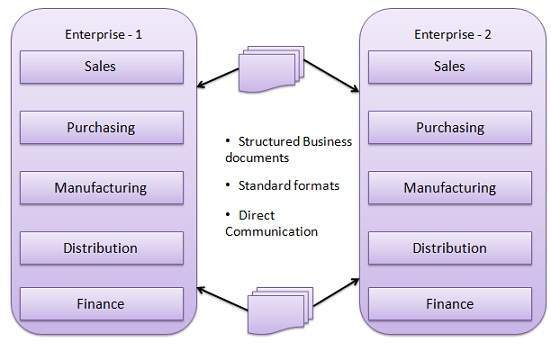E-Commerce - EDI
EDI stands for Electronic Data Interchange. EDI is an electronic way of transferring business documents in an organization internally, between its various departments or externally with suppliers, customers, or any subsidiaries. In EDI, paper documents are replaced with electronic documents such as word documents, spreadsheets, etc.

EDI Documents
Following are the few important documents used in EDI −
- Invoices
- Purchase orders
- Shipping Requests
- Acknowledgement
- Business Correspondence letters
- Financial information letters
Steps in an EDI System
Following are the steps in an EDI System.
- A program generates a file that contains the processed document.
- The document is converted into an agreed standard format.
- The file containing the document is sent electronically on the network.
- The trading partner receives the file.
- An acknowledgement document is generated and sent to the originating organization.
Advantages of an EDI System
Following are the advantages of having an EDI system.
- Reduction in data entry errors. − Chances of errors are much less while using a computer for data entry.
- Shorter processing life cycle − Orders can be processed as soon as they are entered into the system. It reduces the processing time of the transfer documents.
- Electronic form of data − It is quite easy to transfer or share the data, as it is present in electronic format.
- Reduction in paperwork − As a lot of paper documents are replaced with electronic documents, there is a huge reduction in paperwork.
- Cost Effective − As time is saved and orders are processed very effectively, EDI proves to be highly cost effective.
- Standard Means of communication − EDI enforces standards on the content of data and its format which leads to clearer communication.
Comments
Post a Comment